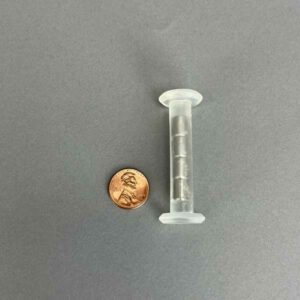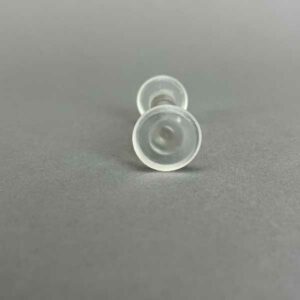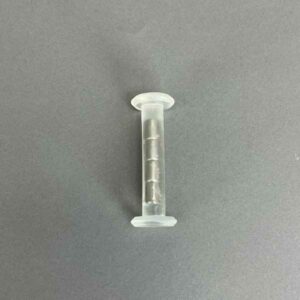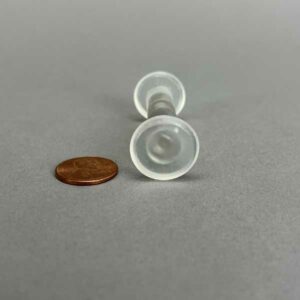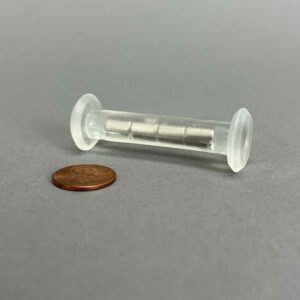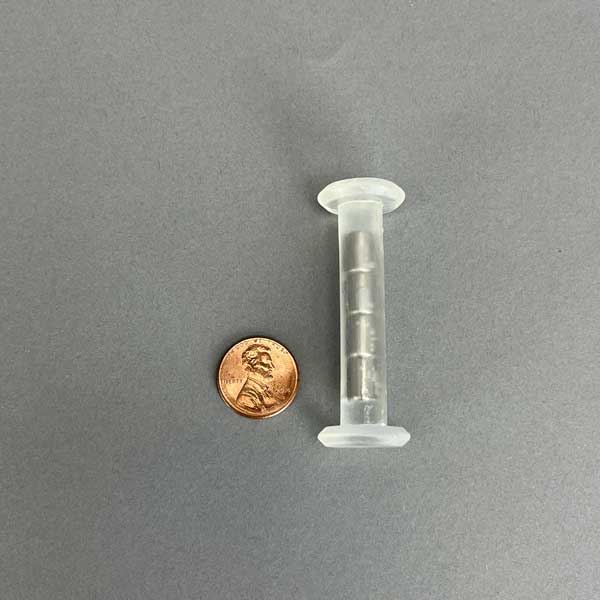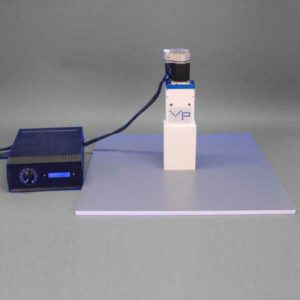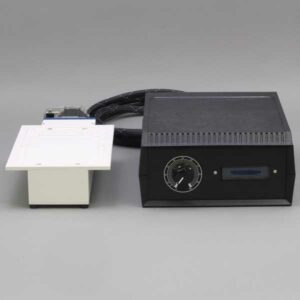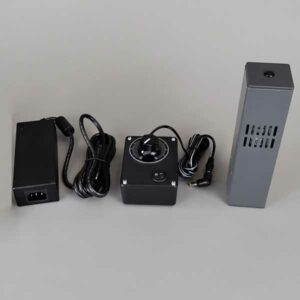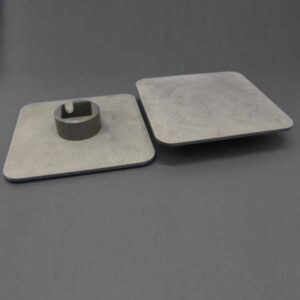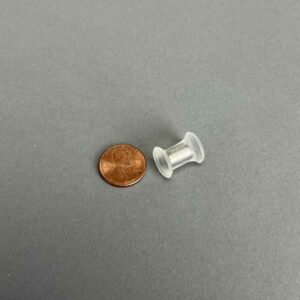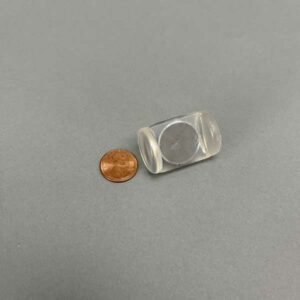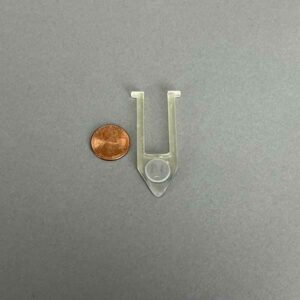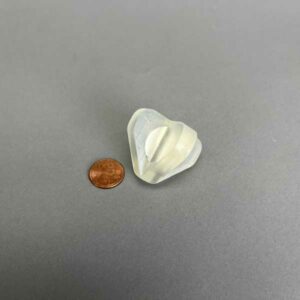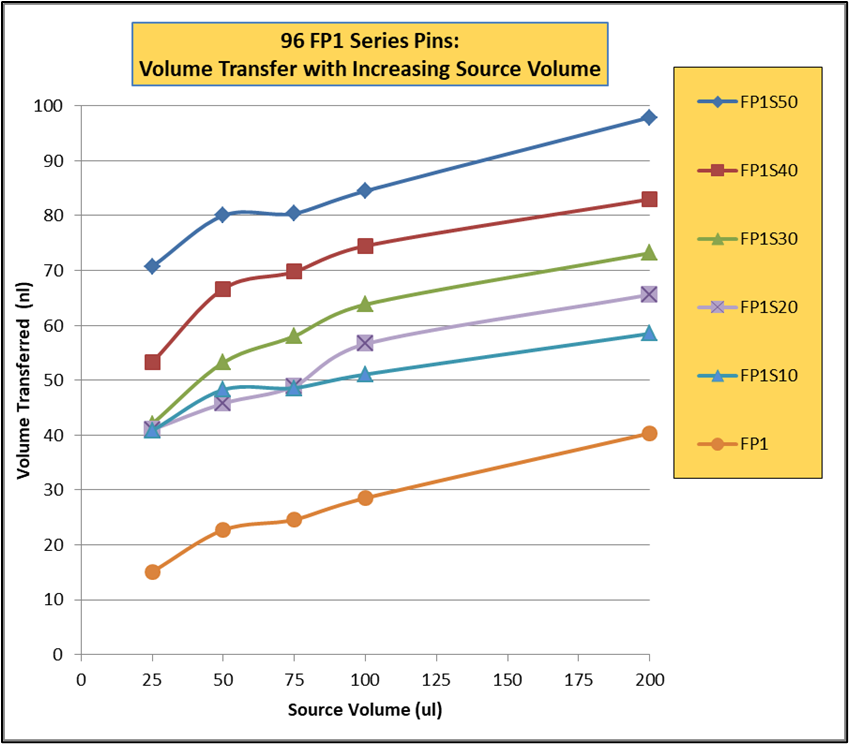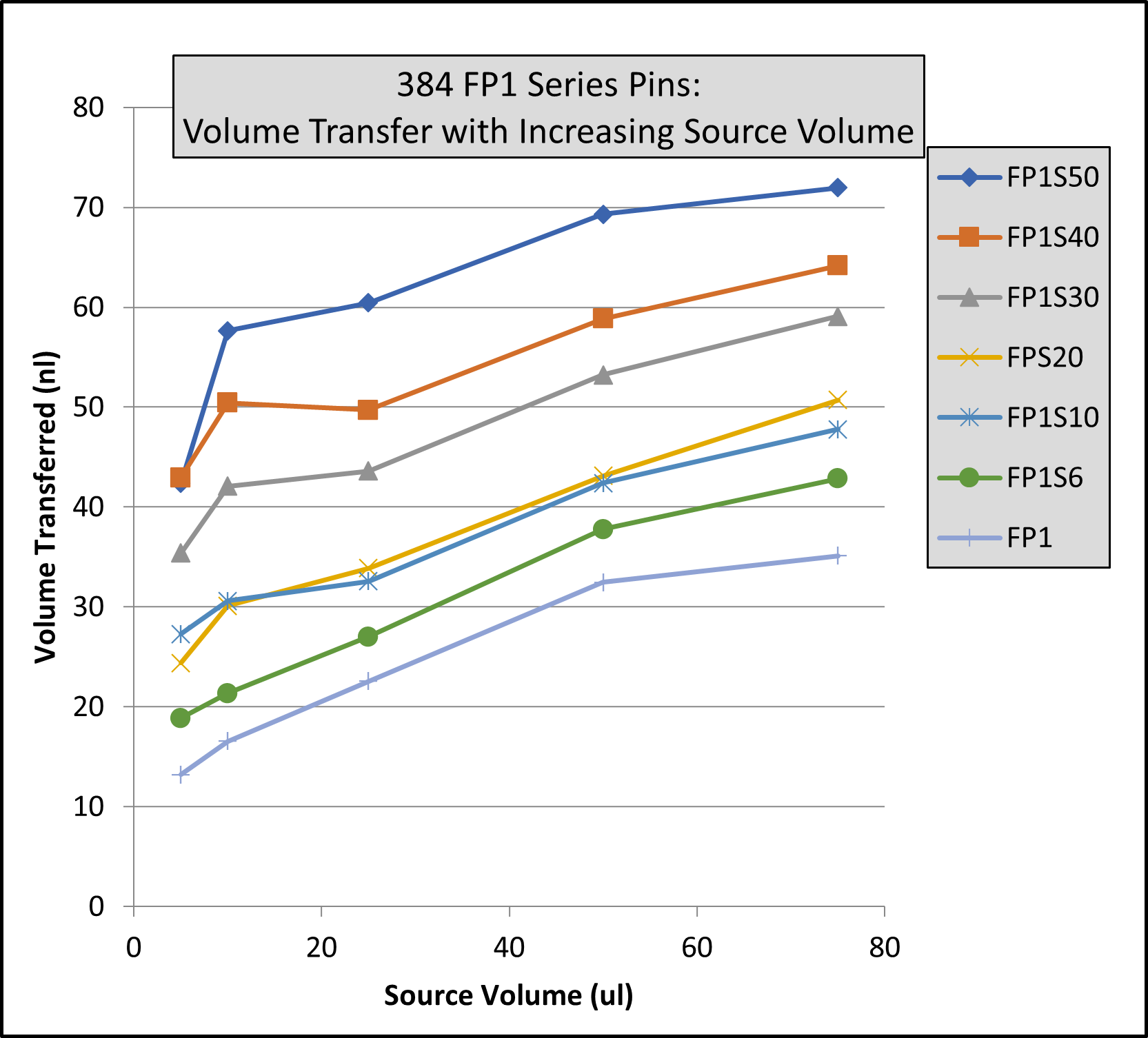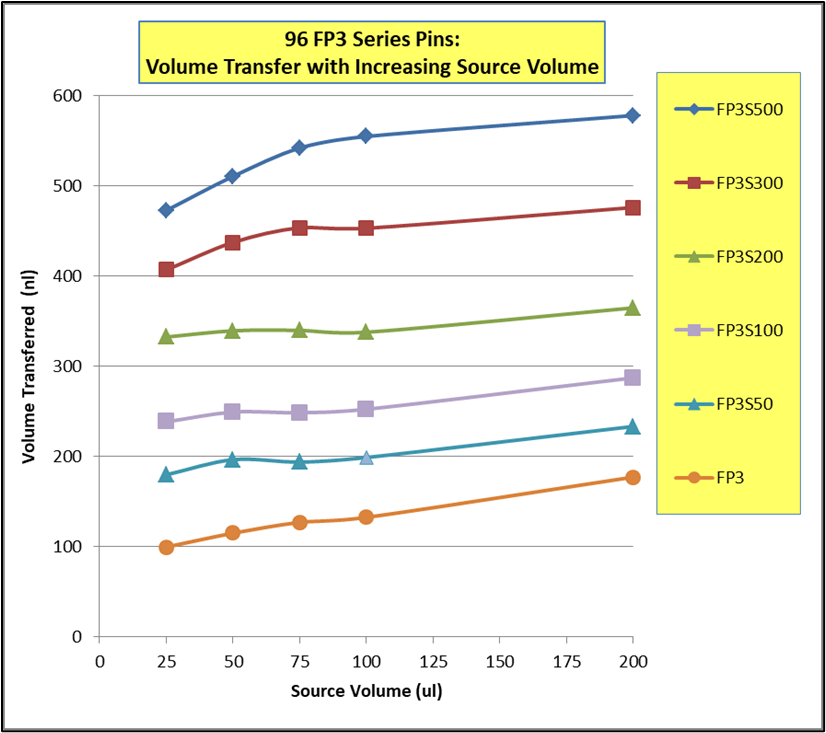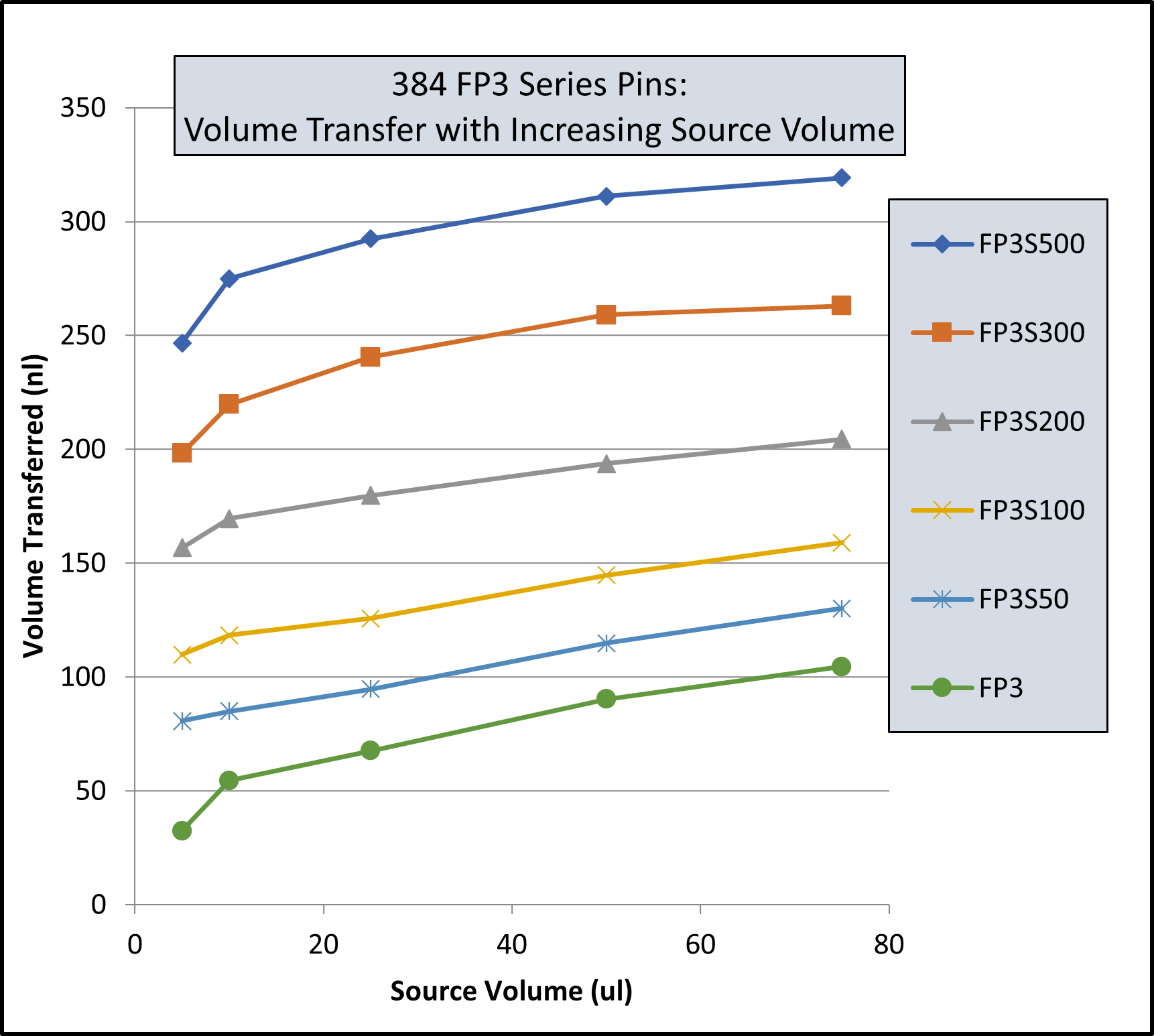STIR ELEMENT, DUMBBELL, Four Encapsulated NdFeB Magnets, 52 MGO, High-Temperature Resin, 20mm Diameter, 59mm Length, 80°C Max Operating Temp for Magnets
VP 785DU-D20-L59-M
STIR ELEMENT, DUMBBELL, Four Encapsulated NdFeB Magnets, 52 MGO, High-Temperature Resin, 20mm Diameter, Used in Bottles
| Shape | Dumbbell |
|---|---|
| Container Used | Bottles |
| Bottle Volume | 500mL |
| Diameter | 20mm |
| Length | 59mm |
| Magnet Type | Neodymium (NdFeB) |
| Magnet Strength | 52MGO |
| Temp Resistant | 80°C Max Operating Temp |
| Autoclavable | Yes |
| Encapsulation/Coating | High-Temp Resin |
| No of Magnets | 4 |
| Magnet Dimensions | 6mm x 10mm |
| Sterilizable by Gamma Radiation | No |
Overview
The ability to make and use NdFeB stir elements to stir very viscous solutions and tightly couple them for high-speed mixing procedures has long been the goal of scientists. Also, the ability to use the flexibility of 3D printing to easily make Stir Elements of any shape is a significant advantage over the molding process typically used to encapsulate magnetic stirrers. The cost of making a mold is significantly high and the temperatures necessary to make the encapsulating material (like PTFE) molten is high enough to destroy the magnetic ability of NdFeB. The ability to 3D print and encapsulate NdFeB means that prototypes of a unique design can be made in a single day for less than $50.00, and if successful, the process can be automated for production runs of hundreds of parts per day.
In addition to the rare earth magnets NdFeB and SmCo, lesser expensive AlNiCo or Magnetic Stainless Steel can also be encapsulated by this method.
The Problems
Most Stir elements on the market today employ PTFE encapsulation via a molding process of AlNiCo or SmCo magnets. No company has been able to PTFE encapsulate NdFeB because the temperature necessary for melting the PTFE destroys the magnetic character of the NdFeB. NdFeB magnets are the strongest of all magnetic materials and therefore the most useful in mixing viscous liquids. Also, the strength of NdFeB stir elements is useful in high-speed stirring applications because they remain strongly coupled to the drive magnet. We were the first to produce PVDF and PEEK encapsulation of NdFeB stir elements. We developed a system of molding simple hollow cores from PVDF and PEEK and then placing a NdFeB magnetic cylinder into the hollow core and sonically welding the two cores together. This method works with simple cylinder designs but not with complex designs because of the limits of sonic welders.
We have also developed a vapor deposition process using Parylene to encapsulate NdFeB magnets that protects them from caustic solutions but the soft parylene coating is quickly worn off by the friction of stirring against a glass or plastic surface. We sought to protect the Parylene coating by taking a sheet of PTFE and using an end mill to make identical pockets on both side of the PTFE sheet leaving a 2 mm thick membrane of PTFE between the two pockets and placing a Parylene coated NdFeB disc into each of the pockets, so they are held in the pocket magnetically. This method protects the Parylene coating and allows for more complex stirrer designs, however cleaning these stir elements requires taking the parylene-coated NdFeB magnets out and cleaning the pockets and the parylene-coated magnets after each use to prevent cross-contamination. A cumbersome and time-consuming process.
The Solution
We start by making a stereolithography 3D printed stir element that has one or more slot openings in the top surface that will accommodate one or more magnets. Once the support structure is removed, the magnet(s) are placed into the slot or slots and a liquid form of the same high-temperature and chemically resistant resin is poured into the slot covering the magnet. The stir element is then placed into a UV light chamber to cure (harden) the resin and encapsulate the magnet. The Stir element is further hardened by placing in an oven at 80° C for 120 minutes. 3D stereolithography printing allows for many custom and complex designs, while still fully encapsulating the magnet. The ability to capture the utility of stereolithography 3D printing makes this method an inexpensive prototyping masterpiece. The resin formulation allows for traditional sterilizing methods, such as autoclaving and gamma radiation, to be used.
Advantages
- Fully hard encapsulated NdFeB Stir Elements
- Unlimited design possibilities due to stereolithography 3D printing
- Solvent/Temperature resistance encapsulation material to 150°C
- Rapid production of workable prototypes
- Easy clean up
- No need for coated magnets
- Can use NdFeB N42 or NdFeB N52, SmCo, AlNiCo or Magnetic Stainless Steel
Applications
- Stirring viscous solutions in unique vessel geometry where the stir element can be designed to fit the unique geometry and maximize stirring efficiency.
- Provide maximum magnetic coupling with the drive magnet to effect high RPM stirring.
Solvent Testing
The High Temp 3D resin has been Solvent tested by the source of the resin and by V&P Scientific, Inc. and holds up very well against most common solvents except Chloroform and strong acids. See the tables below and the testing protocols.
HIGH-TEMPERATURE RESIN SOLVENT COMPATIBILITY TABLE
V&P Scientific, Inc. Testing
The following table represents the difference between the initial measurements and weight compared to those after a 24-hour exposure to the solvents.
| CHEMICAL | X(mm) | Y(mm) | Z(mm) | vol (mm3) | weight(g) | vol(%) | weight(%) | pH |
|---|---|---|---|---|---|---|---|---|
| Acetonitrile | 0.05 | 0.01 | 0.03 | 9.28 | 0.00 | 0.88 | 0.00 | 10.00 |
| Chloroform | 0.03 | 0.08 | 0.13 | 24.75 | 0.03 | 2.36 | 2.38 | 4.5 |
| Dimethyl Sulfoxide | 0.00 | 0.03 | 0.00 | 3.10 | 0.00 | 0.30 | 0.00 | 9.00 |
| Dimethylformamide | 0.02 | 0.01 | 0.02 | 5.16 | 0.01 | 0.49 | 0.81 | 6.70 |
| Ethyl Acetate | 0.01 | 0.02 | 0.03 | 6.27 | 0.01 | 0.59 | 0.81 | 6.50 |
| Trifluoroacetic Acid | 0.02 | (0.28) | 0.03 | (23.14) | (0.03) | (2.20) | (2.42) | 1.00 |
Experimental Protocol
- Prepare high-temperature resin cubes of dimensions 10mm x 10mm x 10mm
- Take measurements and the weight of the cube, first measure
- Using a 20mL glass vial, submerge the cube in 10mL of the desired chemical, tighten screw lid
- Wait 24 hours
- Dump chemical waste into a dedicated waste container
- Remove the resin cube and pat dry with a paper towel
- Take measurements and weight of the cube, second measure
Resin Supplier Testing
Percentage weight gain over 24 hours for a printed and post-cured 10mm x 10mm x 10mm cube immersed in the respective solvent.
| CHEMICAL | vol(%) gain | weight(%) gain |
|---|---|---|
| Acetic Acid, 5% | <1 | <1 |
| Acetone | <1 | <1 |
| Isopropyl Alcohol | <1 | <1 |
| Bleach 5% | <1 | <1 |
| Butyl Acetate | <1 | <1 |
| Diesel Fuel | <1 | <1 |
| Diethyl Glycol Monomethyl Ether | <1 | <1 |
| Hydraulic Oil | <1 | <1 |
| Skydrol 5 | <1 | <1 |
| Hydrogen Peroxide (3%) | <1 | <1 |
| Isooctante (Gasoline) | <1 | <1 |
| Mineral Oil (Light) | <1 | <1 |
| Mineral Oil (Heavy) | <1 | <1 |
| Salt Water (3.5%) Nacl | <1 | <1 |
| Sodium Hydroxide | <1 | <1 |
| Water | <1 | <1 |
| Xyline | <1 | <1 |
| Hydrochloric Acid | 1.2 | <1 |

